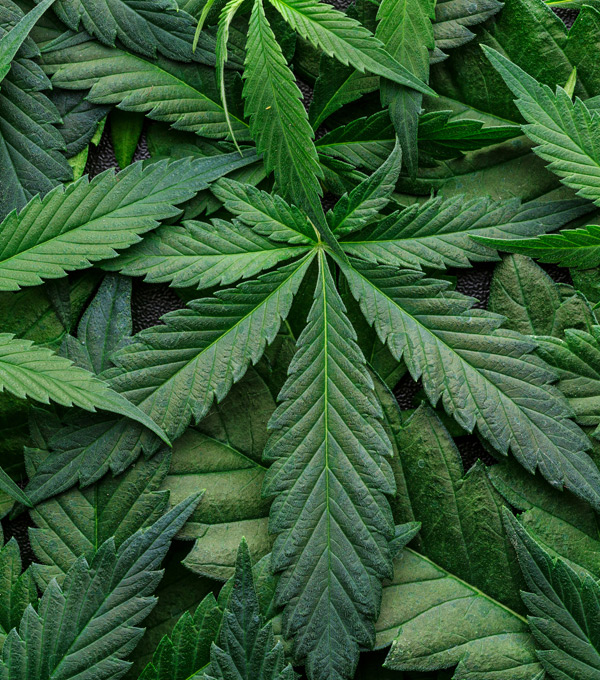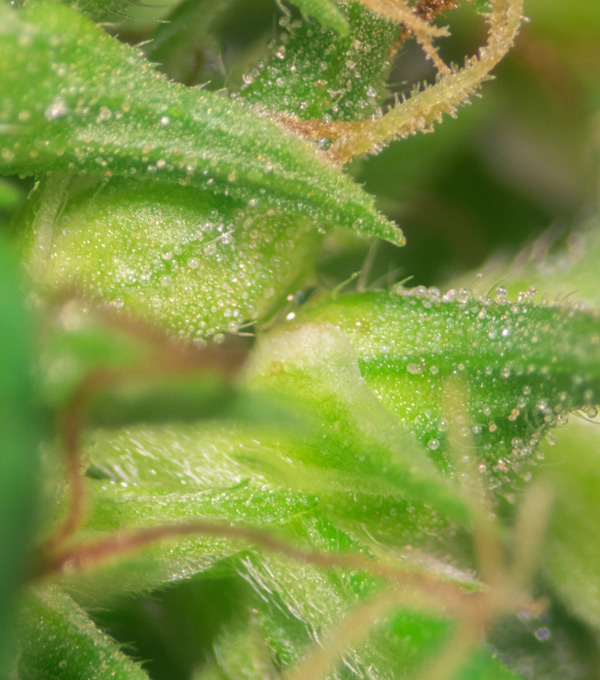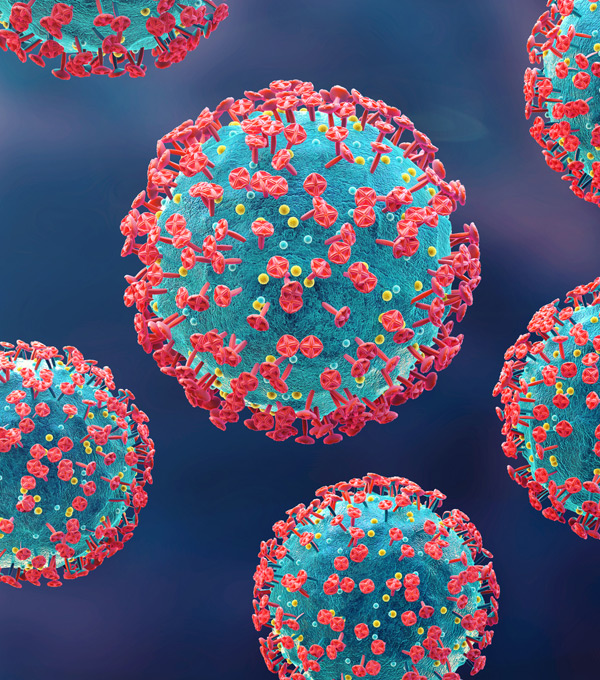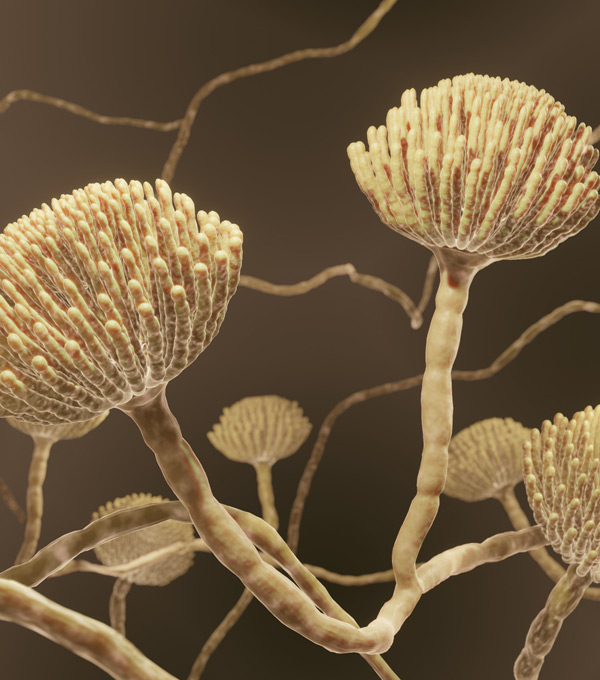Our Tests

TestingPotency
In order to ensure accurate and precise dosing for both medicinal and recreational purposes, Cannabis or Cannabis derived products need to undergo a potency test.
PML offers 19 cannabinoids for testing from a variety of matrices including flower buds, edibles, oils, concentrates, topicals, and infused drinks, using an advanced UHPLC. Additional research will further allow PML to analyze other cannabinoids and expand this list to help better characterize the metabolomic profiles of your products.
| Cannabidivarin (CBDV) | Cannabigerol (CBG) |
| Cannabidivarinic Acid (CBDVA) | Cannabigerolic Acid (CBGA) |
| Cannabidiol (CBD) | Cannabinol (CBN) |
| Cannabichromene (CBC) | Cannabicyclolic Acid (CBLA) |
| Cannabicyclol (CBL) | Cannabichromenic Acid (CBCA) |
| Cannabidiolic Acid (CBDA) | Cannabinolic Acid (CBNA) |
| Δ8-Tetrahydrocannabinol (Δ8-THC) | |
| Tetrahydrocannabivarin (THCV) | |
| Δ9-Tetrahydrocannabinol (Δ9-THC) | |
| Δ9Tetrahydrocannabiphorol (Δ9-THCP) | |
| Δ9-Tetrahydrocannabinolic Acid A (THCA-A) |
TestingTerpenes
The structural and functional diversity of the terpenes in Cannabis sativa (estimated to be over 100), represent not only their importance in many of the plant’s processes, but also their unique roles in human health, in conjunction with the related large family of phytocannabinoids.
This has led to their growing interest and importance in both the medicinal and pharmaceutical markets. PML offers a growing list of the number of terpenes it analyzes to help identify the potential health benefits of the various products it tests. The following table lists the terpenes PML currently offers for analysis using a GC-MS and the latest advanced methods for the highest level of accuracy and sensitivity.
| Monoterpenes | Sesquiterpenes |
| alpha-Pinene | beta-Caryophyllene |
| (-)-beta-Pinene | alpha-Bisabolol |
| beta-Myrcene | (-)-Guaiol |
| p-Cymene | alpha-Humulene |
| D-Limonene | Nerolidol-1 |
| Camphene | Caryophyllene oxide |
| alpha-Terpinene | |
| Terpinoline | |
| Ocimene-2 | |
| Linalool | |
| (-)-Isopulegol | |
| Geraniol | |
| delta-3-Carene | |
| Eucalyptol | |
| gamma-Terpinene |
TestingPesticides
With the increasing movement for the legalization of Cannabis sativa as a medicinal and recreational consumer product, the need for regulating its health and safety has included the testing of pesticide residues.
California has included 66 pesticides for regulatory compliance testing of Cannabis harvest and product batches. 21 of these pesticides are classified as Category I, with the highest level of toxicity. The following lists the Category I and II pesticides that PML tests using both a LC and GC triple quad MS.
| Category I Residual Pesticide | Category II Pesticides | Category II Pesticides |
| Aldicarb | Abamectin | Hexythiazox |
| Carbofuran | Acephate | Imidacloprid |
| Chlordane | Acequinocyl | Kresoxim-methyl |
| Chlorfenapyr | Acetamiprid | Malathion |
| Chlorpyrifos | Azoxystrobin | Metalaxy |
| Coumaphos | Bifenazate | Methomyl |
| Daminozide | Bifenthrin | Myclobutanil |
| DDVP (Dichlorvos) | Boscalid | Naled |
| Dimethgate | Captan | Oxamyl |
| Ethoprop(hos) | Carbaryl | Pentachloronitrobenzene |
| Etofenprox | Chlorantraniliprole | Permethrin |
| Fenoxycarb | Clofentezine | Phosmet |
| Fipronil | Cyfluthrin | Piperonylbutoxide |
| Imazalil | Cypermethrin | Prallethrin |
| Methiocarb | Diazinon | Propiconazole |
| Methyl parathion | Dimethomorph | Pyrethrins |
| Mevinphos | Etoxazole | Pyridaben |
| Paclobutrazol | Fenhexamid | Spinetoram |
| Propoxur | Fenpyroximate | Spinosad |
| Spiroxamine | Flonicamid | Spiromesifen |
| Thiaclopri | Fludioxonil | Spirotetramat |
| Tebuconazole | ||
| Thiamethoxam | ||
| Trifloxystrobin |
TestingHeavy Metals
Cannabis sativa is a hyperaccumulator and can tolerate high concentration levels of heavy metals in the soil leading to unacceptably amounts in plant tissue for human consumption.
The manufacturing process of cannabis products, such as extracts, can also potentially concentrate metals, rendering them unsafe. PML uses ICP-MS to test for the presence of the four California regulated heavy metals – Arsenic (As), Cadmium (Cd), Lead (Pb), and Mercury (Hg)- from cannabis flowers and derived products.
- Arsenic (As)
- Cadmium (Cd)
- Lead (Pb)
- Mercury (Hg)
TestingResidual Solvents
Concentration of the cannabinoids and terpenes from Cannabis sativa plants may be achieved through various extraction processes that are either based on solvents or solventless methods. Among the commonly used organic solvents are butane, ethanol, propane, and other aliphatic hydrocarbons or alcohols able to effectively and efficiently extract the cannabinoids and terpenes stored in the globular trichomes.
The majority of Cannabis products containing concentrates are therefore based on solvent extractions. To ensure, however, the extractions of Cannabis plants using organic solvents are based on licensed and certified methods and equipment, PML tests the presence of any carryover or residual solvents in the final products using a GC-MS.
| Category I Solvents | Category II Solvents |
| 1,2-Dichloroethane | Acetone |
| Benzene | Acetonitrile |
| Chloroform | Butane |
| Ethylene oxide | Ethanol |
| Methylene chloride | Ethyl acetate |
| Trichloroethylene | Ethyl ether |
| Heptane | |
| Hexane | |
| Isopropyl alcohol | |
| Methanol | |
| Pentane | |
| Propane | |
| Toluene | |
| Total xylenes (ortho, meta-, para-) |
TestingMicrobials
PML tests for the following Microbial pathogens in Cannabis flowers and Cannabis products using quantitative PCR– the most accurate and sensitive method for the detection of the pathogen’s DNA.
- Aspergillus fumigatus
- Aspergillus flavus
- Aspergillus niger
- Aspergillus terreus
- Hop latent viroid
- Shiga toxin producing Escherichia coli
- Salmonella
TestingMycotoxins
Mycotoxins from three major genera of fungi, Aspergillus, Fusarium, and Penicillium, are a ubiquitous and chemically varied group of secondary metabolites with adverse health effects to humans and animals. Over 300 mycotoxins have been identified with an array of structures and modes of actions, but only a small percentage of them have been detected in contaminated food supply chains leading to mycotoxicosis, the progression of disease and pathogenesis through ingestion or exposure to mycotoxins.
Two of the most widely occurring mycotoxins, though, and the cause of severe necrosis to the kidneys and liver carcinogenesis from chronic exposure, are aflatoxins and ochratoxin A. PML’s advanced methods using a triple quad LC detects minute amounts of these mycotoxins.

TestingNutrient Content
The ability to understand the nutrient dynamics in the plant and growth media throughout the plant’s lifecycle may lead to greater nutrient and water efficiencies, resulting in better yields and cost reductions.
PML tests for the following macro- and micro- nutrients from plant, soil and water samples using ICP-MS. (Pending accreditation to ISO 17025)
| Macro-nutrients | Micro-nutrients | ||
| Nitrogen | Aluminum | Copper | Sodium |
| Phosphorous | Antimony | Iron | Strontium |
| Potassium | Barium | Magnesium | Thallium |
| Bismuth | Manganese | Tin | |
| Boron | Molybdenum | Titanium | |
| Calcium | Nickel | Uranium | |
| Chromium | Selenium | Vanadium | |
| Cobalt | Silver | Zinc | |
TestingMoisture Content and Water Activity
The optimal moisture content and water activity balances the need for safety from microbial growth and product quality. Moisture content is a measure of the amount of water in a product, whereas water activity measures the percentage of the free water in the product available for microbial growth.
PML uses the most rapid and accurate instrument, with a chilled mirror dew point sensor to measure both water activity and moisture content, that meet or exceed the ASTM precision requirement of ±0.003 Aw.










